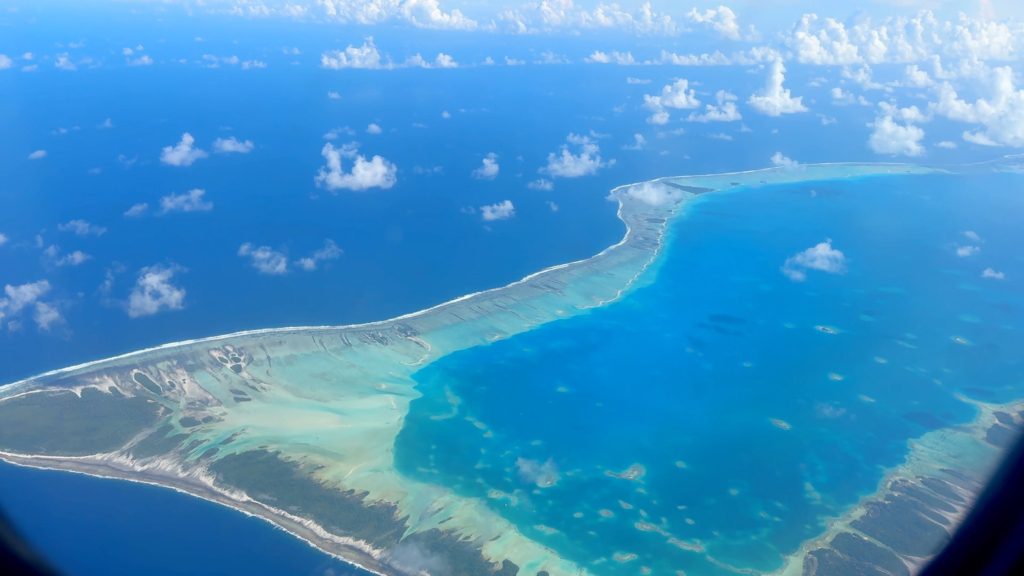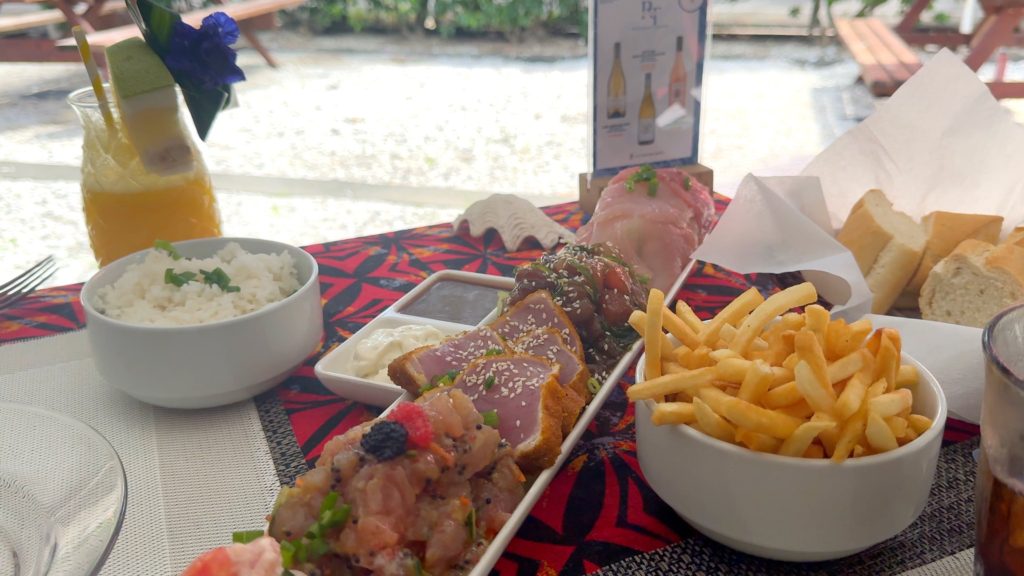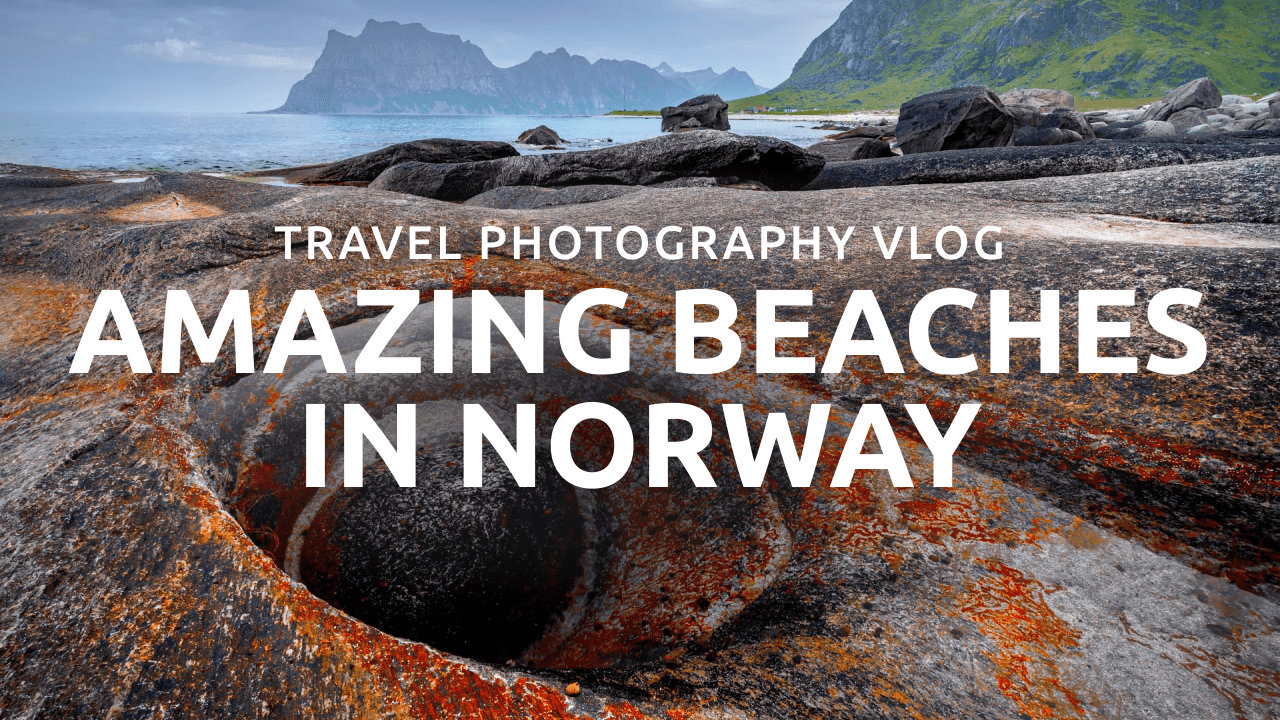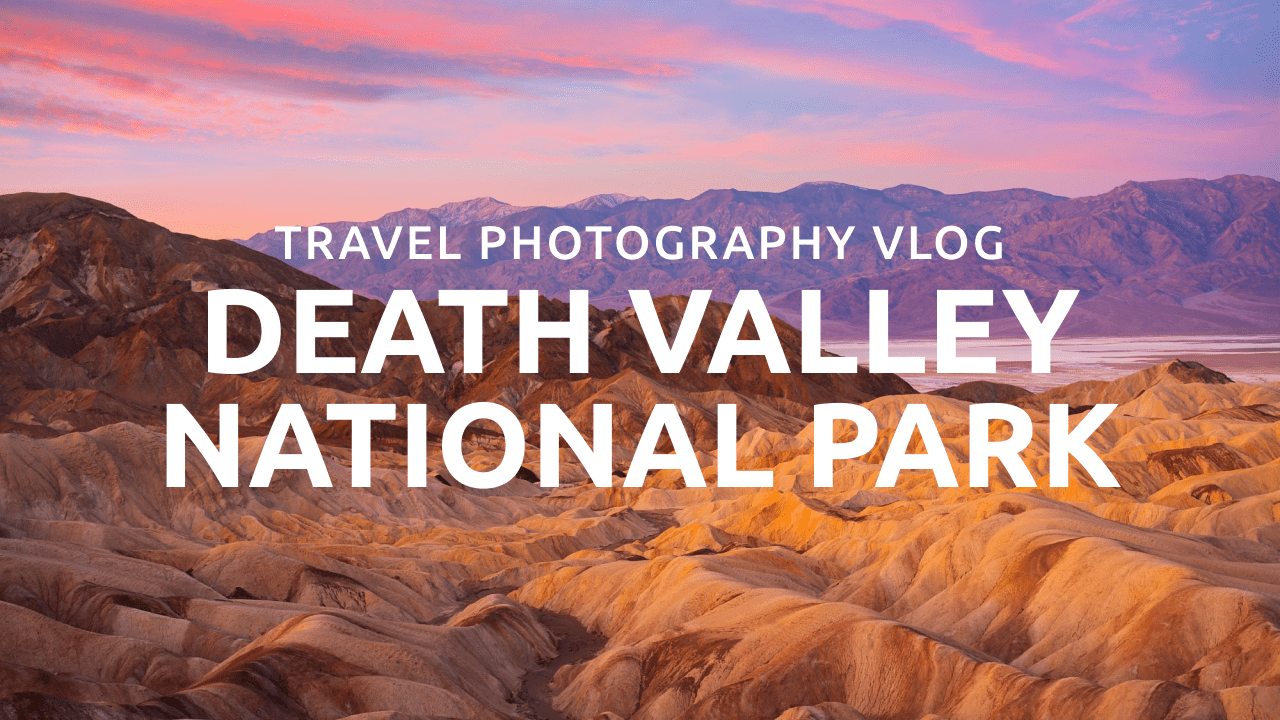After sharing a few videos of our French Polynesia adventure on my YouTube channel, I’ve received lots of questions, many of whom are planning their own trips to this incredible part of the world.
To help answer those questions and make your planning process easier, I’ve put together a detailed French Polynesia Travel guide.
In this article, I’ll share how I planned our trip, the lessons we learned along the way, and tips to ensure you make the most of your visit to French Polynesia.
Why Visit French Polynesia?
French Polynesia is often called one of the most beautiful places in the world – a true tropical paradise. It’s remote, can be expensive, and requires a long journey from Europe, but the variety of landscapes and experiences makes it unforgettable.
From dramatic volcanic peaks and lush jungles to turquoise lagoons, coral reefs, and pristine beaches, French Polynesia offers something for every traveler. It’s not just about relaxing – there’s amazing snorkeling and diving, scenic hikes, boat trips, and a fascinating local culture.
Our goal for the two-week trip was to experience as much variety as possible without feeling rushed. In this guide, I’ll share our itinerary, practical tips, and advice to help you plan your own French Polynesia adventure.
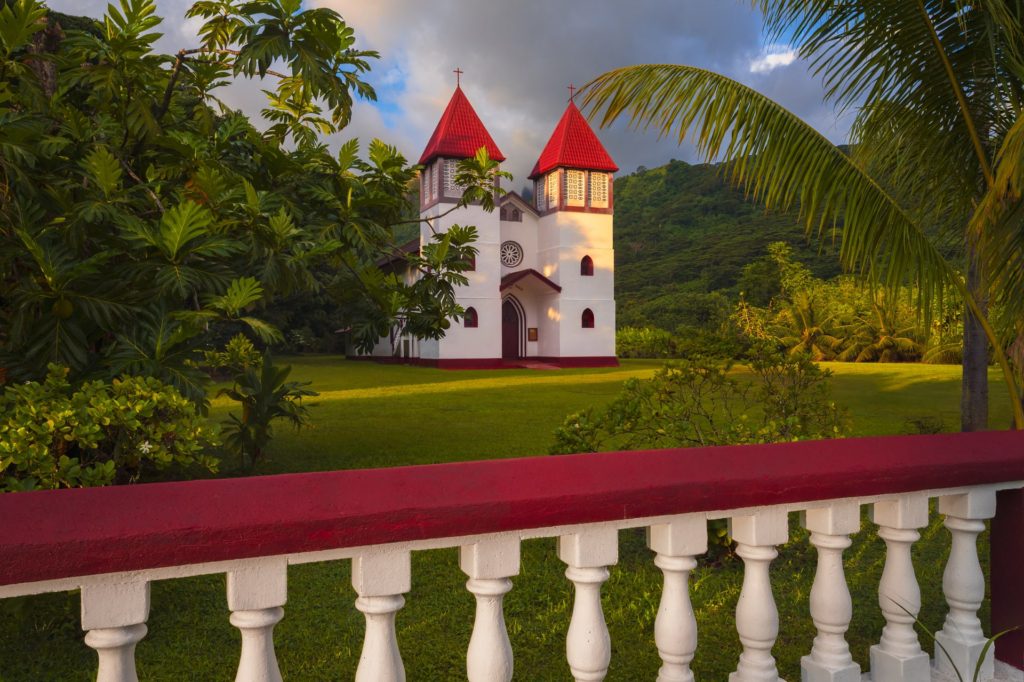
Overview of Our French Polynesia Trip
We visited French Polynesia in mid-April to early May, the shoulder season just after the rainy season and before the peak summer crowds. This timing gave us mostly good weather, fewer tourists, and slightly lower prices.
Our 16-day trip covered five islands: Moorea, Huahine, Bora Bora, Fakarava, and a brief stay on Tahiti. Each island had its own unique vibe, which I’ll dive into later in this guide.
We travel budget-consciously, prioritizing experiences and activities over luxury. We usually stay in self-catered accommodations, explore independently, and rent cars to get around.
Photography is a big focus for me, so planning was centred around finding the best viewpoints and photo opportunities. Additionally, we completed our Open Water scuba diving certification before the trip, making diving, especially in Fakarava, a highlight of our adventure.
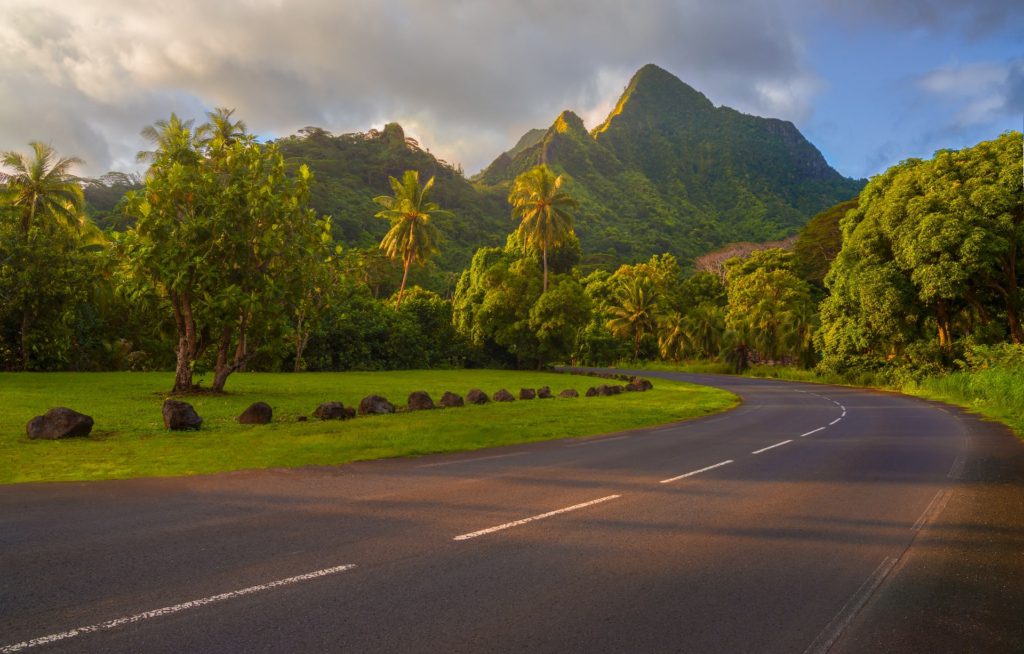
When to Visit French Polynesia
We visited French Polynesia in late April to early May, during the shoulder season. The weather can be unpredictable – expect a mix of sunny days and occasional rain – but this period offers a good balance of fewer crowds and lower prices.
- The Rainy Season (November to early April): Hot, tropical, and wet, but fewer tourists and often more affordable accommodation.
- Dry Season (mid-April to October): Typically sunny, less humid, and ideal for outdoor activities, though it’s the busiest and most expensive time to visit.
Weather also varies by island. For example, the Tuamotus (like Fakarava) are generally drier than the Society Islands (Moorea, Tahiti), so a wet spell on one island doesn’t always mean bad weather everywhere.
Activities by Season
Consider what you want to do – diving, hiking, whale watching, or relaxing. Humpback whale season runs from July to early November, while the calmest waters for snorkeling and diving occur during the dry season.
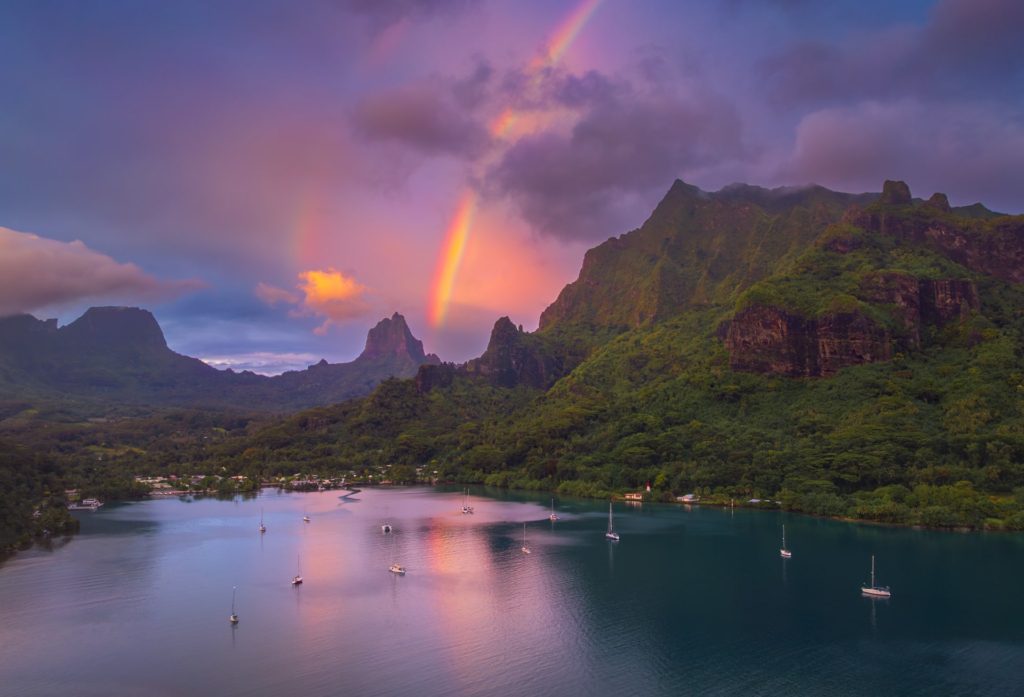
Choosing Which Islands to Visit
When planning a trip to French Polynesia, many guides suggest spending minimal time on Tahiti, instead focusing on the smaller, more scenic islands. While Tahiti has waterfalls, beaches, and some scenic spots, there is so much more to explore in French Polynesia.
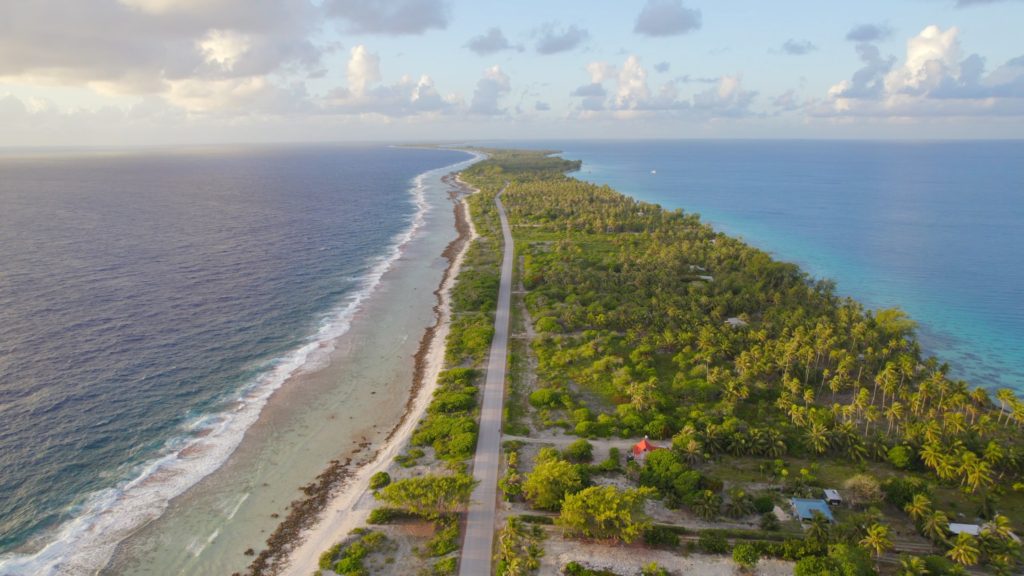
With over 100 islands spread across a vast area, deciding which ones to visit can feel overwhelming. Here’s a breakdown of the main regions:
- Society Islands: Includes Moorea, Bora Bora, Huahine, and Raiatea. These islands are relatively close together and well-connected by flights, making them a convenient choice for most people.
- Tuamotu Islands: Includes Rangiroa and Fakarava. These remote islands are ideal for diving and snorkeling but require more planning due to less frequent flights.
- Austral Islands, Gambier & Marquesas: Extremely remote, often with only one flight per week. Best suited for people with three weeks or more, looking to get off the beaten track.
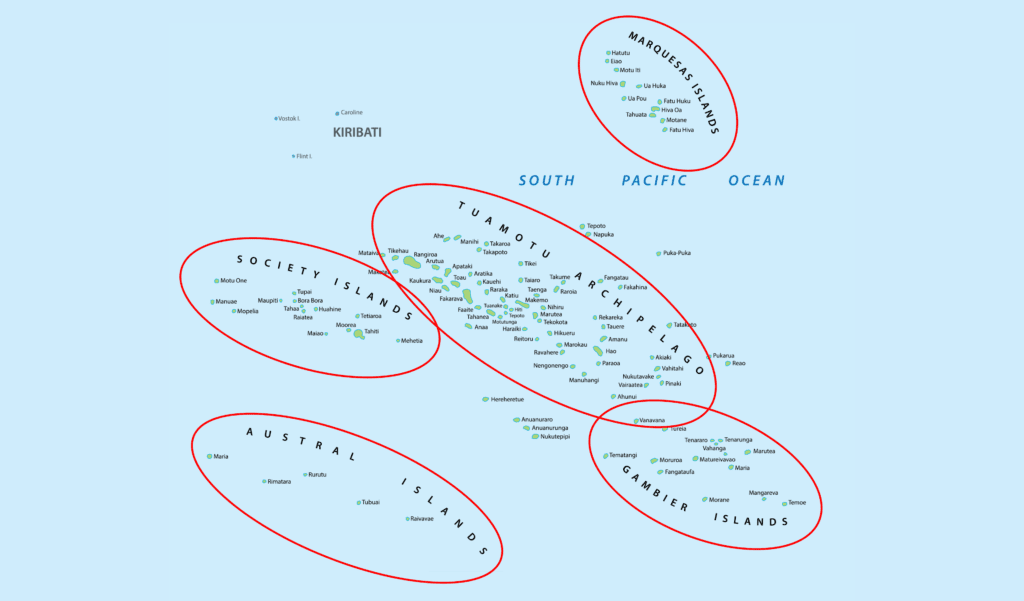
Planning Tip: Before finalising your itinerary, check inter-island flight schedules. This helps avoid long layovers and awkward transfers and ensures your route is realistic.
Some islands are more developed, offering activities, restaurants, and accommodations.
Others are quieter and more authentic, perfect for travelers seeking local culture and a slower pace.
- Moorea: A lush, mountainous island accessible by ferry or flight from Tahiti. Great for hiking, snorkeling, and spotting marine life – a perfect introduction to French Polynesia.
- Bora Bora: Famous for its turquoise lagoon and overwater bungalows. Ideal for luxury stays and relaxing, though exploration beyond the lagoon is limited.
- Huahine, Raiatea, Taha’a: Quieter islands with a more authentic local feel. Fewer resorts and more cultural experiences make them perfect for those looking to get off-the-beaten-track.
- Rangiroa and Fakarava: Tuamotu gems for diving and snorkeling. Fakarava, in particular, stood out for its incredible marine life.

Inter-Island Flights in French Polynesia
If you’re planning to visit more than one island in French Polynesia, flying is the most practical way to get around. With islands spread across a vast area, boats are rarely convenient, so most travelers rely on domestic flights.
The main airline is Air Tahiti, which offers the most extensive network across the islands. There are other airlines, like Air Moana, but their coverage is limited and they can be less reliable in terms of delays or cancellations. Air Tahiti is the more established option and the one we used for all our inter-island flights.
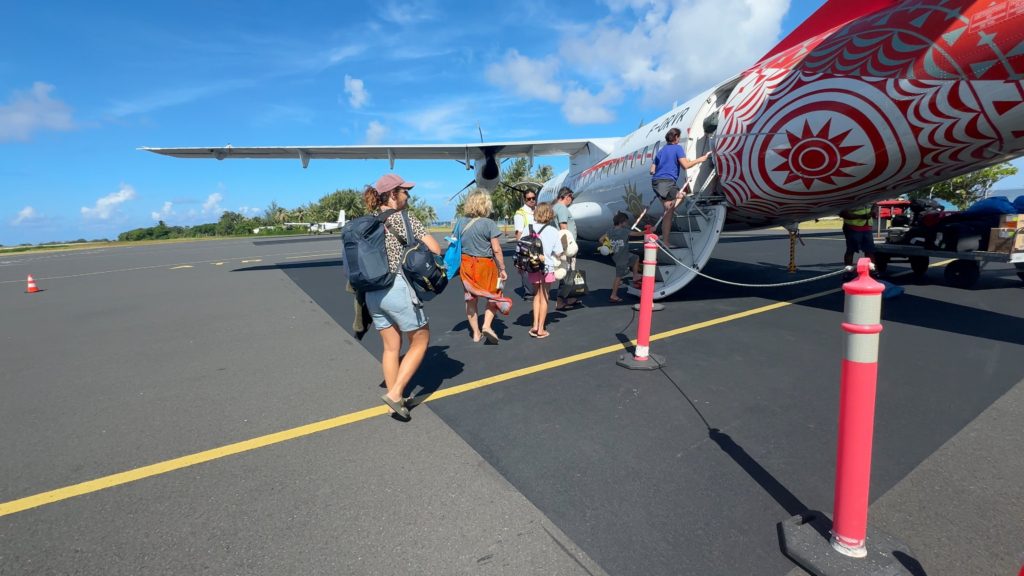
Multi-Island Passes
One of the best features Air Tahiti offers is multi-island passes. These are package deals where you select a set group of islands and choose the travel dates that suit you. They often work out cheaper than buying individual flights separately and are a great way to start shaping your itinerary.
In fact, these passes can guide your route efficiently and cost-effectively, especially if you’re unsure which islands to include. They naturally suggest a logical sequence of islands, helping you avoid unnecessary backtracking and making the most of your time in French Polynesia.
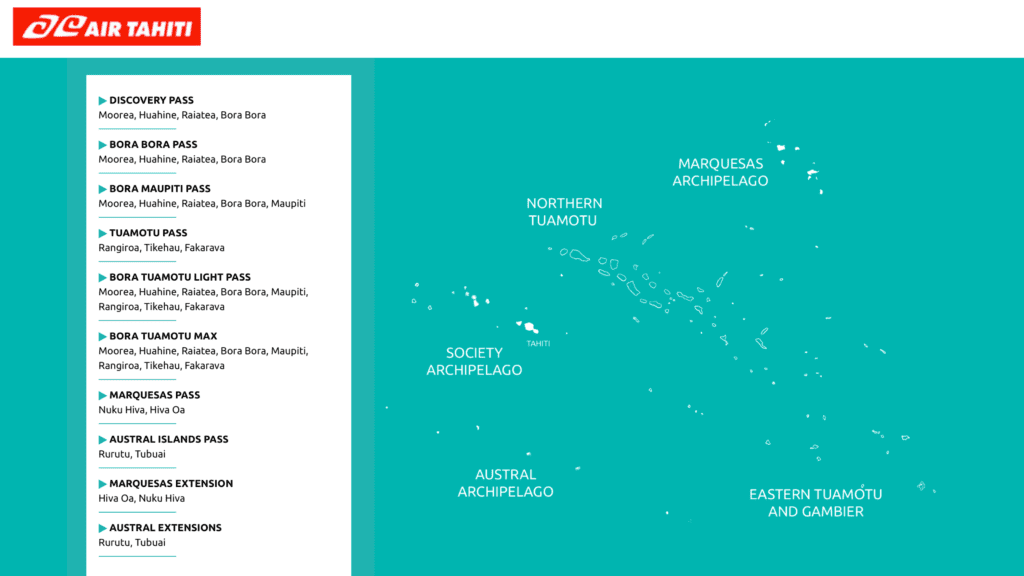
Booking Tip for Air Tahiti Flights
One handy tip we discovered is that you don’t always have to book Air Tahiti flights online immediately. Instead, you can email their customer service or use the form on their website with your preferred itinerary and travel dates. They’ll often hold the tickets for you without requiring payment upfront.
This was incredibly useful for us because it gave us time to confirm accommodation and rental car availability before committing. From what we experienced, Air Tahiti could hold tickets for around six weeks – even though we contacted them about three months before our trip.
It’s worth noting that this approach might be trickier during peak season, but if it’s available, it’s a great way to secure your preferred flights and finalize your travel logistics before paying for the pass.
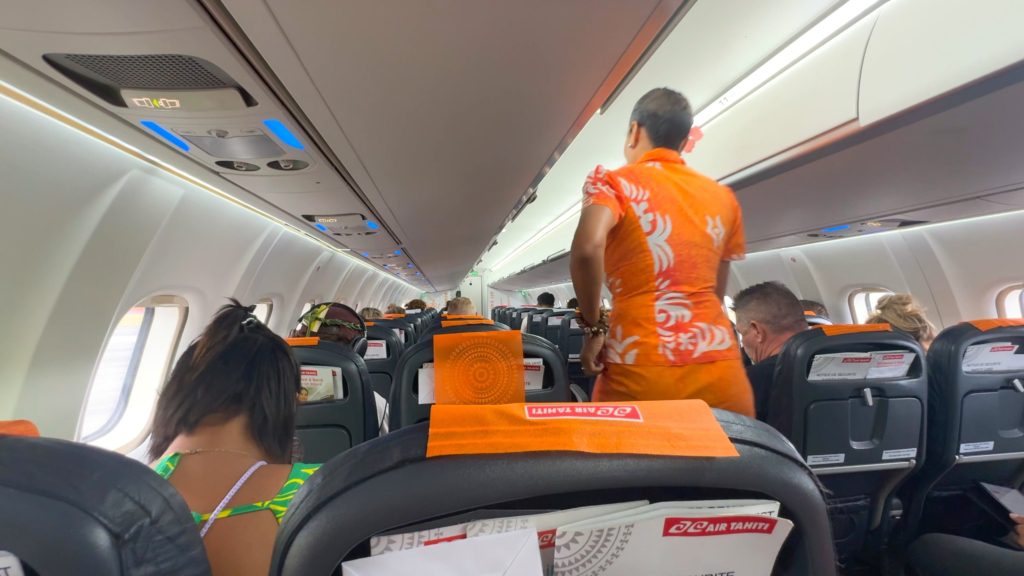
Checking Flight Schedules
When planning inter-island flights in French Polynesia, it’s important to pay attention to the flight frequency and routes, especially when traveling from the Society Islands to the Tuamotu Islands. Flights are generally less frequent in this region, and some routes may involve lengthy layovers.
For example, our flight from Bora Bora to Fakarava was fairly straightforward, with just a quick refuelling stop in Rangiroa. However, that particular schedule only ran twice a week during our visit. Missing it would have meant a 2–3 hour layover in Rangiroa, which could be inconvenient if you’re short on time.
Flight schedules like this can be highly situational, but it’s something to check carefully when planning your itinerary. If you have limited time on each island, minimizing travel downtime can make a big difference. On the other hand, if you’ve got a more relaxed schedule, longer layovers might not be a major issue.
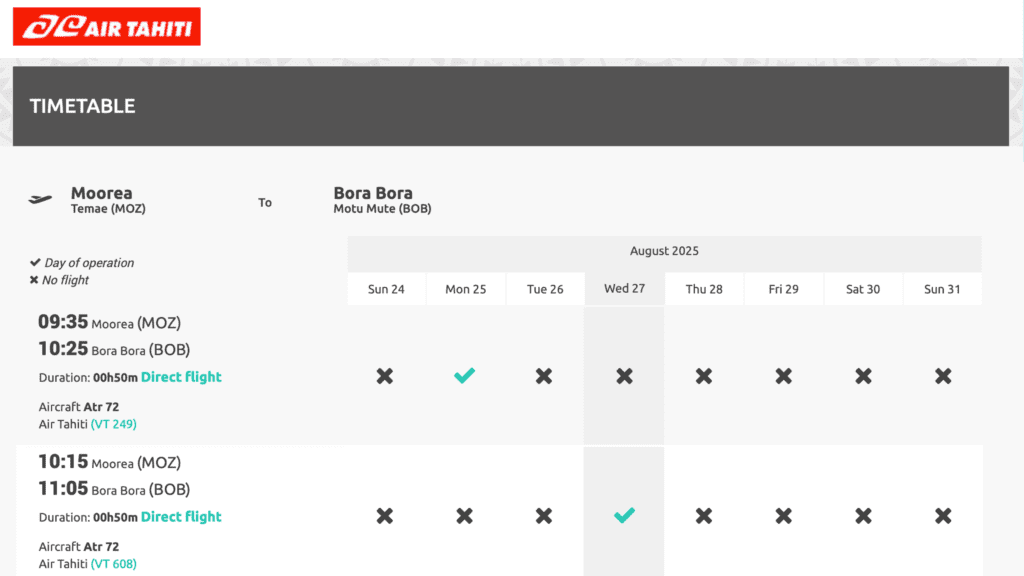
Airport & Flying Experience
Flying between islands in French Polynesia is relaxed and hassle-free, especially compared to other small-island destinations. Most inter-island flights use small propeller planes, and you generally only need to arrive at the airport about an hour before departure.
Check-in is quick, and at most of the smaller airports, you won’t even need to go through security scanners, which keeps things moving. Baggage claim is also very fast, so you won’t waste time waiting around.
Before our trip, I was a bit concerned about airport procedures – having done inter-island flights in places like the Philippines, they can sometimes take half a day. Thankfully, that wasn’t the case here.
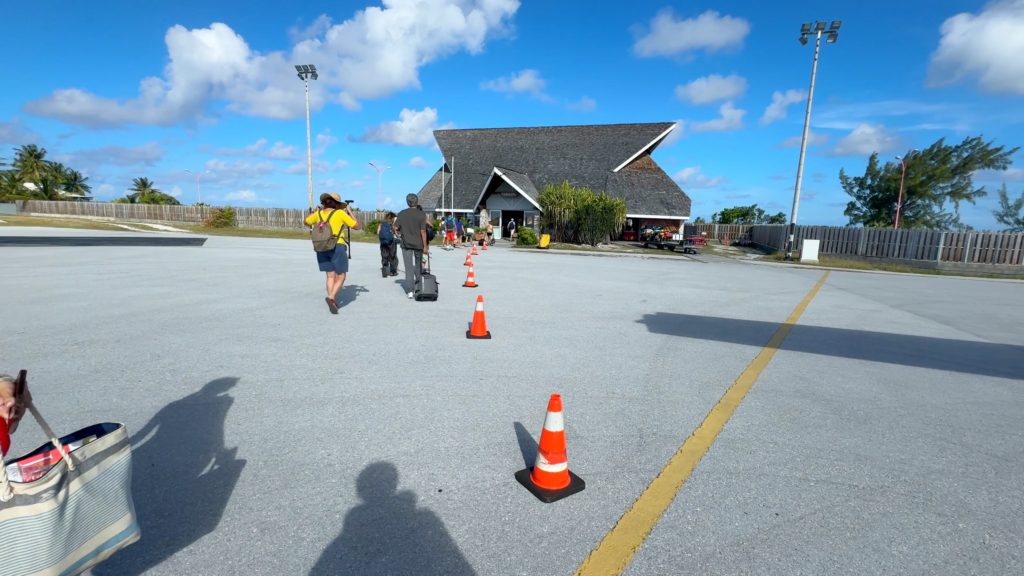
Flights often operate in a loop, like a bus route. Your plane might stop at one island to drop off and pick up passengers, then continue to the next without everyone disembarking.
Seating is first-come, first-served, so if you want to sit with someone or get a good view, it’s worth boarding early. We aimed for a window seat near the front or back, since the engines and propellers can block your view in the middle.
And speaking of views – flying over turquoise lagoons, coral reefs, and dramatic island landscapes is truly part of the experience. These flights are not just transportation; they’re one of the highlights of visiting French Polynesia.
Baggage Restrictions
One important thing to be aware of when flying between islands in French Polynesia is strict baggage limits.
Because these flights use smaller aircraft, weight is taken very seriously. In some cases, airlines may weigh both your checked bags and your hand luggage. It doesn’t always happen, but it’s best to be prepared to avoid surprises at the airport.
Another consideration is overhead storage – it’s quite small on these planes. This means you’ll need to plan ahead and pack efficiently, keeping in mind that your carry-on needs to fit in limited space. Light, compact luggage makes these flights much easier and stress-free.
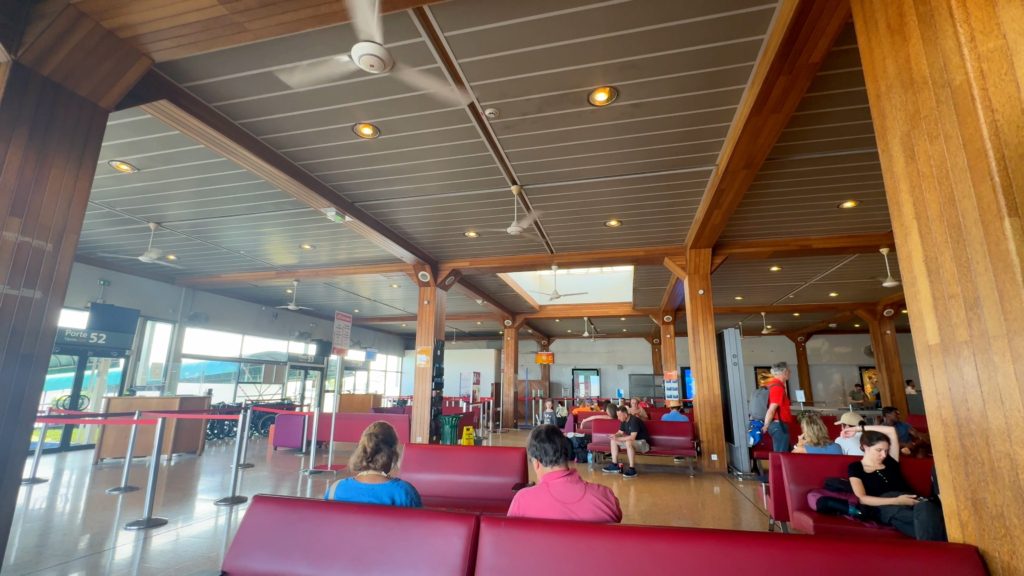
A Tip for Scuba Divers
If you’re a certified scuba diver, Air Tahiti offers an extra 5kg baggage allowance for your dive gear.
All you need to do is show your dive certification card at check-in. We weren’t carrying full dive kits, but even just fins, masks, and snorkels for two people can add up quickly – so that extra allowance was a really useful bonus.
This makes traveling with your gear much easier and gives you one less thing to worry about while hopping between islands.
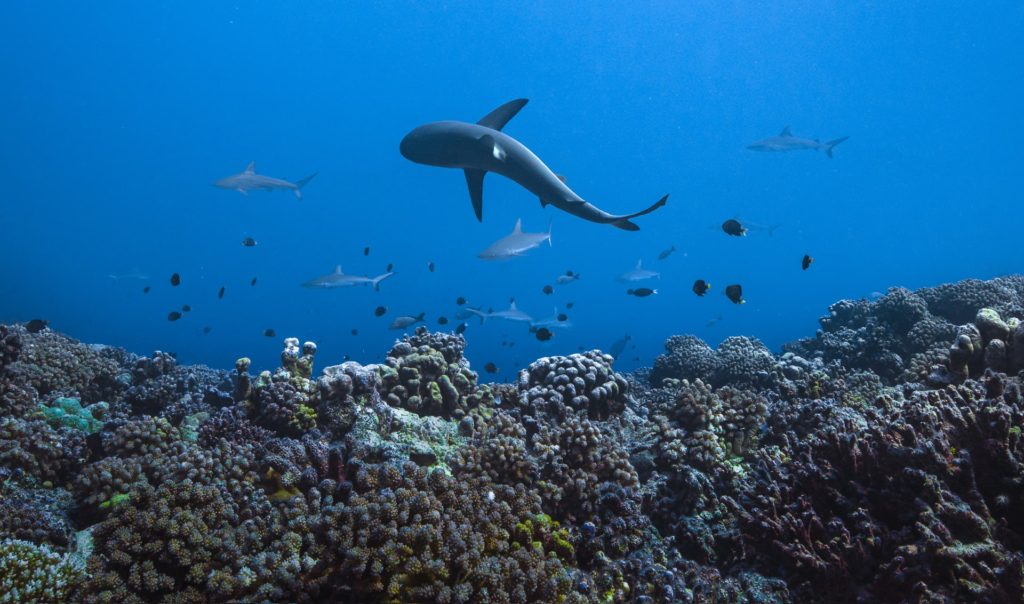
Getting Around the Islands
Once you’re on the islands, having your own transport can make a big difference. On almost every island we visited, we rented a car, and I’m really glad we did. It made getting around much easier and gave us the freedom to explore at our own pace.
Of course, it depends on the type of trip you’re planning. If you’re mostly staying in a resort and doing guided excursions, you probably won’t need your own transport. But for us – as I mentioned earlier – we love finding quieter spots and exploring on our own.
And since photography is a big focus for me, being able to head out for sunrise and sunset shoots without relying on taxis or tours was a huge plus.
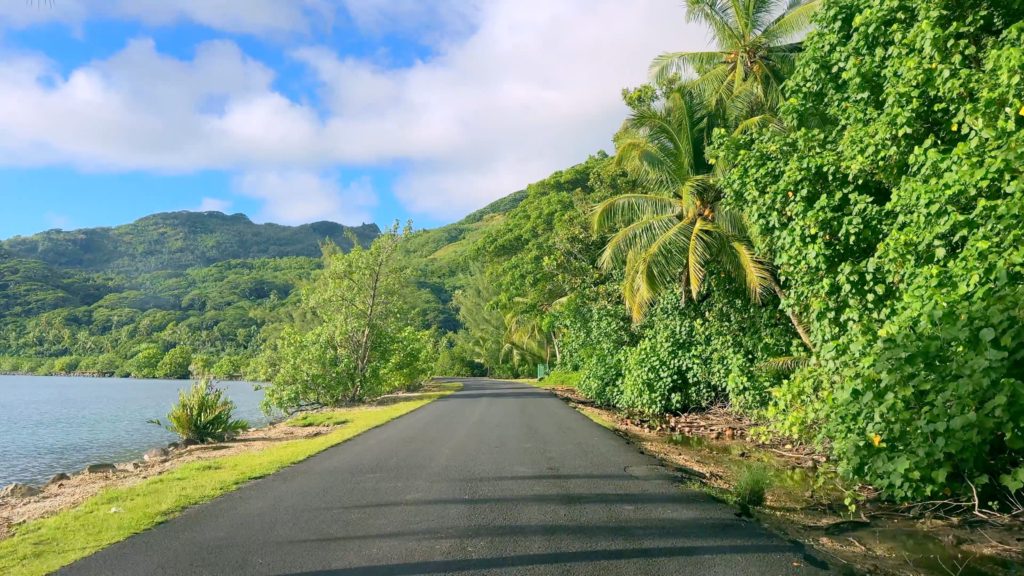
Bora Bora – This is probably the one island where a car isn’t essential. Most popular activities, like lagoon tours and snorkeling trips, include hotel pickups, and many of the island’s restaurants and shops are close together. If you’re staying on a motu (outer islet), you’ll be using a boat transfer anyway. You can rent a bicycle or scooter to explore the main island, but for most visitors, a car isn’t really necessary.
Fakarava – Renting a car isn’t really an option here. The island is small, and bicycles are the main way to get around, which turned out to be one of my favorite parts of the stay — it really adds to the relaxed island vibe. If you want to travel further, you can rent a moped, and for dive trips or boat excursions, tour operators usually provide pickup by car. The same goes for airport transfers – most guesthouses can arrange a taxi for you.
Driving Tips
Driving in French Polynesia is very easy. The pace is laid-back, traffic is light (with the exception of Papeete on Tahiti), and the roads are usually in good condition.
One thing to watch out for is stray dogs, which can wander onto the road. This was particularly noticeable on Bora Bora’s main island – there seemed to be quite a few roaming around.
Car Rental Booking
A key tip is to book your rental car well in advance. The islands are small, there are only a limited number of vehicles available, and during peak season, cars can sell out quickly.
Even for our trip in the shoulder season, we booked about two months ahead, and on islands like Moorea, many companies were already showing no availability. Waiting too long could leave you with no options or paying much more than expected.
Activities
I thought it was worth having a separate section on activities in French Polynesia – for us, it was probably the trip where we had the most organised activities booked.
Some of that came down to scuba diving, but also – contrary to what you might imagine – many of the islands, especially in the Society group, don’t have huge stretches of white sand beaches.
The real magic is out in the lagoons. That’s where you’ll find the beautiful blue water, coral reefs, and marine life. To really experience this, you’ll want to do at least a couple of lagoon excursions.
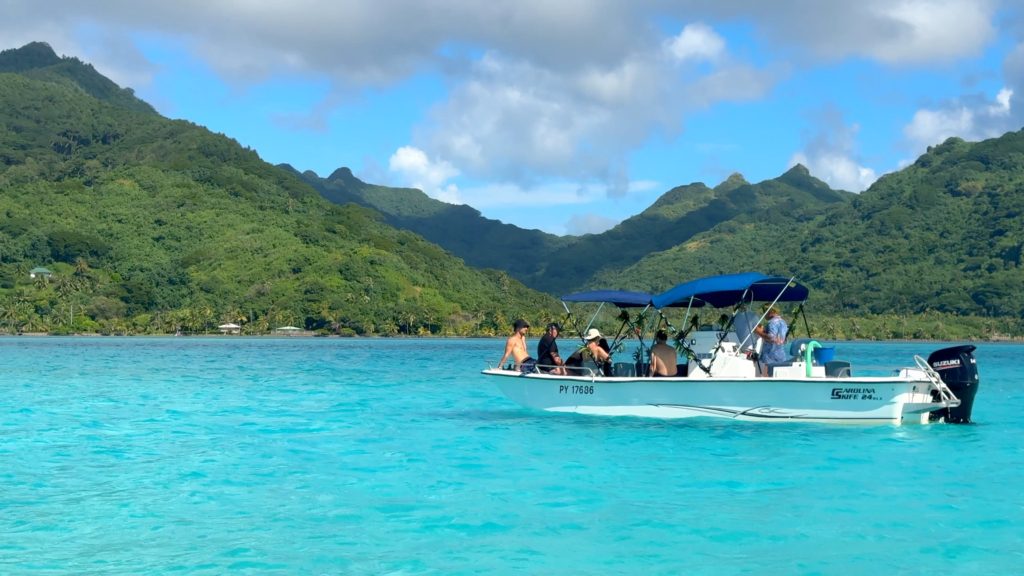
Lagoon Excursions
Typically, lagoon tours run from around 9am to 3pm. You’ll visit two or three snorkel spots — you might see blacktip reef sharks, stingrays, and sometimes even manta rays, especially in Bora Bora.
Lunch is often on a small private motu, where you’ll try some local food, before heading back with maybe one last swim stop.
This gives you a good idea of what to expect, though it can vary from island to island.
One note on tours in Moorea and Bora Bora: these excursions often include areas where the sharks and stingrays are fed daily by the guides. While this makes encounters safe and predictable, it’s worth remembering that these are wild animals – and, like with any wildlife tourism, it’s up to you to decide whether that sits right with you.

Resort Day Pass
One tip that worked really well for us was getting a day pass to one of the more expensive resorts.
We did this in Bora Bora and Moorea, and instead of paying for a full night, you can pay a smaller fee to access all the resort facilities for the day. Some passes even include a two-course lunch.
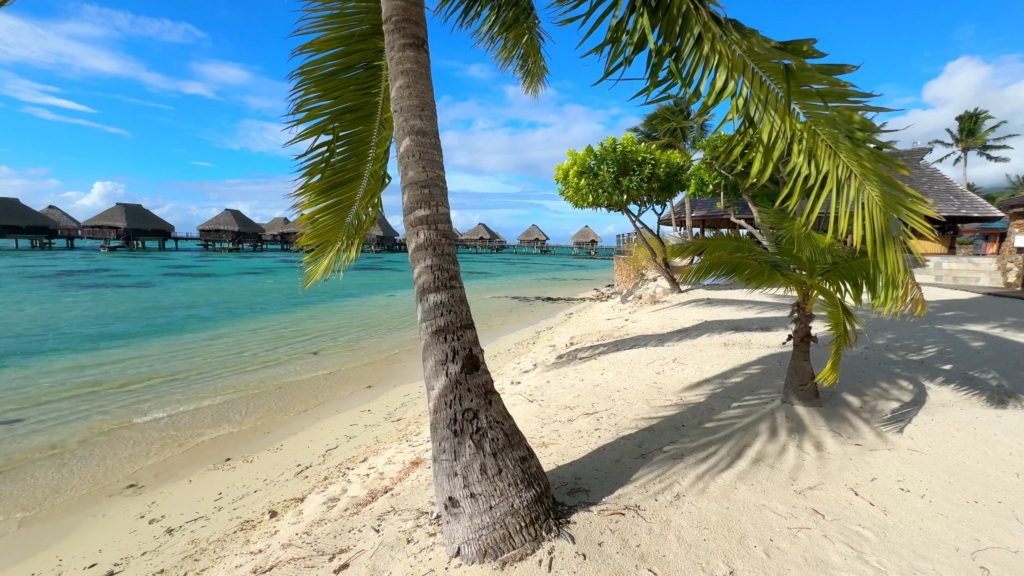
We thought this was a really good deal, because the price of staying overnight in these resorts is astronomical. To put it into perspective, one night at either of the resorts we visited cost more than our total accommodation for the entire trip.
These day passes aren’t heavily advertised, but many resorts do offer them. The best way to secure one is to email the resort directly. Availability may be limited during peak season, as the resorts likely only offer it when they’re not fully booked.
We had a great time doing this – relaxing by the pool, enjoying the scenery, and soaking up the atmosphere. It’s particularly special in Bora Bora, being out on the motu, even though we didn’t have perfect weather that day.
Boat Rental
Another fun way to explore independently is to hire a small boat and head out into the lagoon yourself.
You don’t need a boat licence if the engine is under 6 horsepower. They’re not super powerful, but they’re enough to explore the lagoon.
We tried this in Moorea, launching from Les Tappanier Beach. From there, you’re not far from where the sharks and stingrays are – the same areas that the guided tours visit. Going independently meant we could spend more time at these spots and avoid the crowds.
We also did it in Bora Bora, planning to visit snorkeling locations and get lagoon views, but bad weather forced us to cut the day short.
The boats are easy to drive once you get the hang of it, and rental places provide a basic map showing safe navigation areas and spots to avoid.
Scuba Diving
If you’re into scuba diving – or even just thinking about trying it – French Polynesia is one of the best places in the world for it.
As mentioned earlier, we got our diving certification in the UK before the trip, and had an amazing time diving in Moorea and Fakarava.
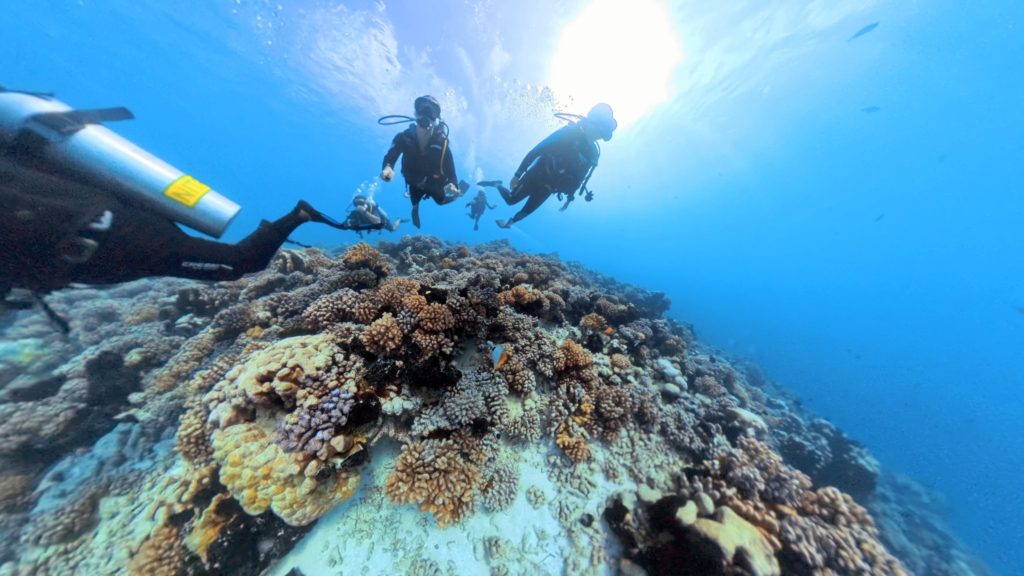
The Tuamotus, particularly Fakarava and Rangiroa, are the diving highlights. The sites are famous for pristine coral, huge schools of fish, and sharks.
We did the Fakarava South Pass, which is known for walls of grey reef sharks — easily one of the best dives in the world.
I’m by no means an expert, still a beginner, but this experience was incredible. Both Rebecca and I really want to return someday with more dive experience so we can get even more out of this location.
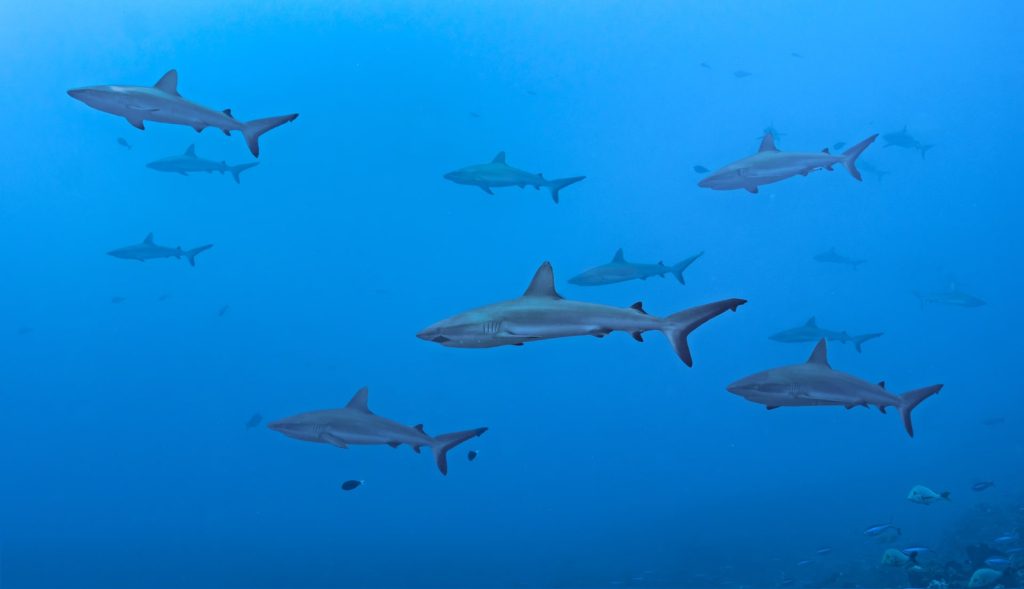
Our 2-Week Itinerary (Example Itinerary)
To give you an idea of what’s possible in two weeks, here’s a breakdown of how we spent our time.
Moorea
After arriving in Tahiti, we caught a short flight to our first island, Moorea, where we stayed for 5 nights — which I’d say is a good amount of time.
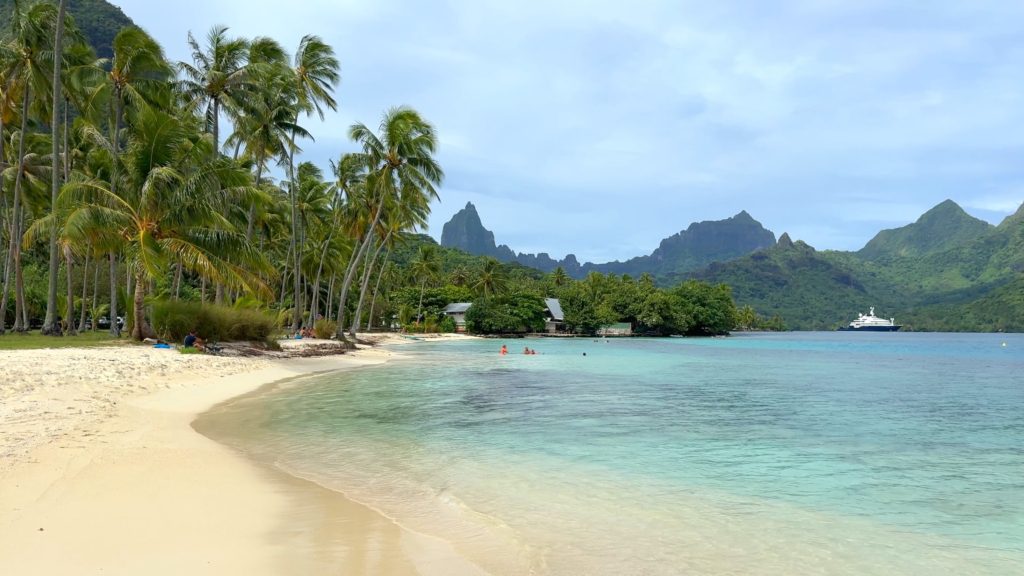
Of all the islands we visited, Moorea had the most variety of activities, so it made sense to give it a bit longer. Some highlights included:
-
Lagoon excursions: We snorkelled with black tip reef sharks and stingrays – so good that we did it on two separate days.
-
Hiking: The Magic Mountain Overlook offers an incredible view of the bay. Another great viewpoint is the Belvedere Lookout, which showcases some of the island’s dramatic peaks.
-
Beaches: Moorea doesn’t have many sandy beaches, but Ta’ahiamanu stood out as the nicest and most photogenic – definitely worth a visit.
-
Hidden gems: A small, beautiful church on the west coast made for a peaceful sunset photo spot.
-
Relaxation: We also took advantage of a day pass at one of the resorts, which was perfect after a day of diving and spotting plenty of lemon sharks.
Overall, Moorea is a fantastic first stop in French Polynesia – there’s something for everyone, whether you’re into adventure, photography, or just relaxing by the lagoon.
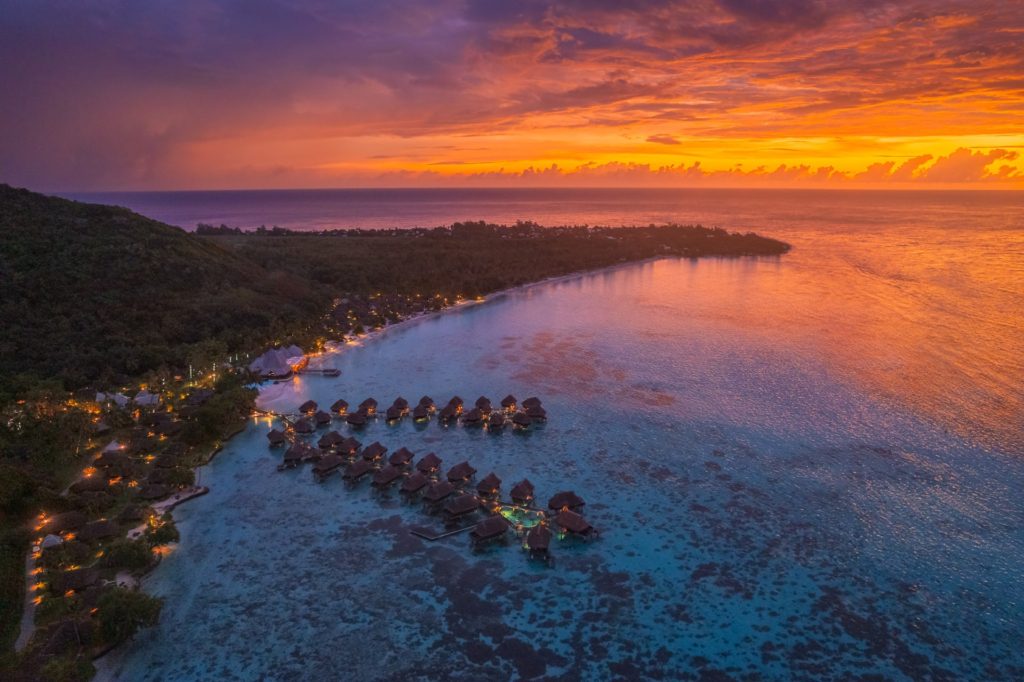
Huahine
Our next stop was Huahine, where we spent 3 nights. This island was a real change of pace — much quieter and more local compared to Moorea or Bora Bora. It’s perfect if you’re after a more authentic, laid-back experience.
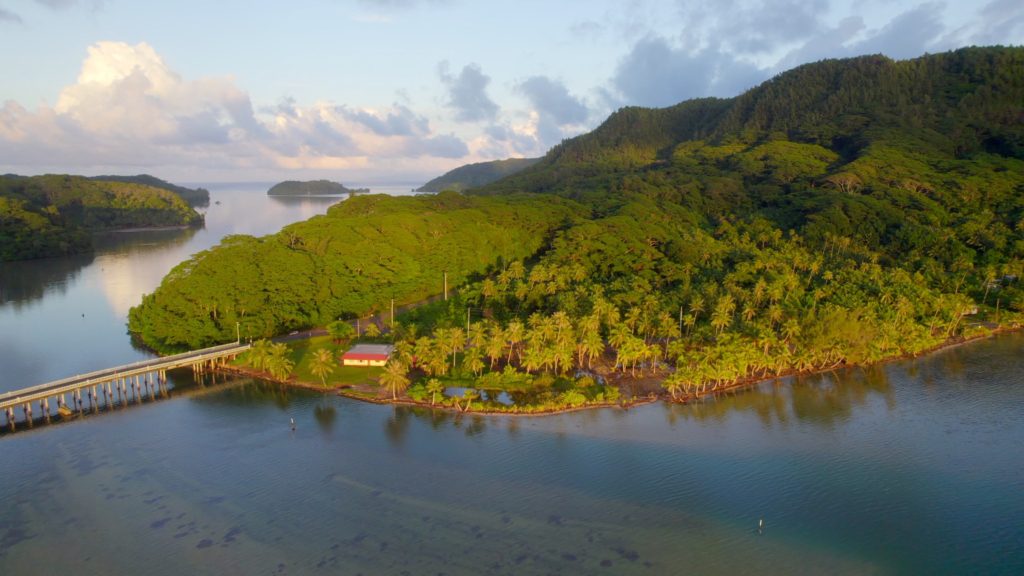
Some highlights for us included:
-
Snorkelling: We discovered a beach on the northeast of the island with calm waters and abundant marine life just offshore.
-
Lagoon boat trip: We did a full-day boat tour around the island, with stops for swimming, snorkelling, and a fresh lunch. Honestly, this was probably one of the best days of the trip – completely relaxed with stunning scenery everywhere.
-
Exploring the island: Huahine has a rugged, untouched beauty, and having a rental car made it easy to drive around, stopping at viewpoints, beaches, and little villages along the way.
Three nights felt just right, giving us time to unwind and explore. While we loved the slower vibe, we were also ready to move on and see what the next island had to offer.
Bora Bora
Next up was Bora Bora, which was a huge contrast to Huahine. The island is more developed and, as you’d expect, very touristy. But it’s also one of those bucket-list destinations you just have to experience at least once.
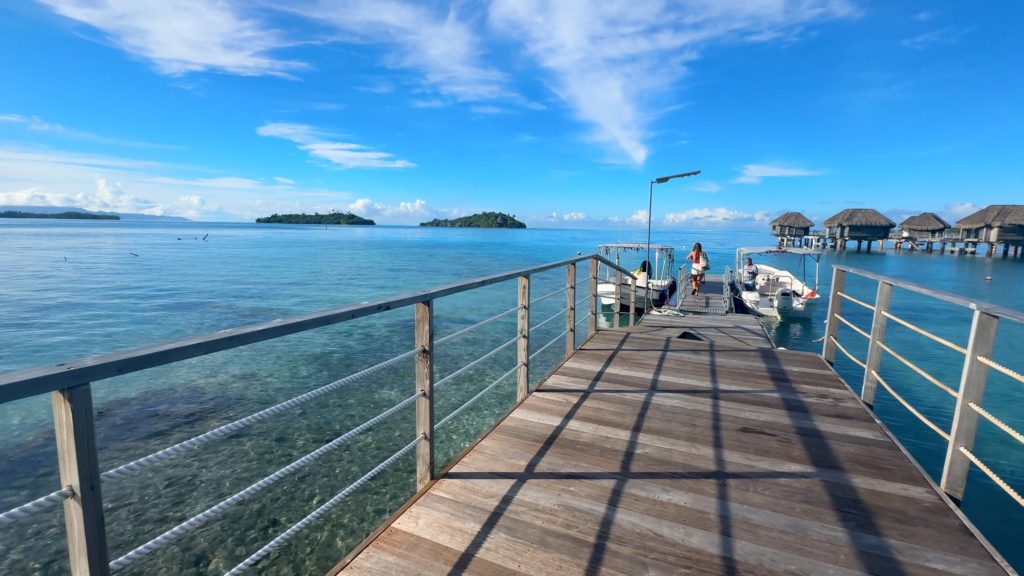
The highlights included:
-
Lagoon tour: We were lucky with perfect weather and calm seas, spotting a manta ray — one of the most memorable moments of the whole trip — along with plenty of sharks and stingrays.
-
Luxury experience: We also tried a resort day pass, which gave us access to the beach, pool, and restaurant. It was a really relaxing way to enjoy the iconic overwater bungalow setting without paying the astronomical prices.
We stayed 3 nights in Bora Bora, which felt about right — enough to enjoy the highlights while keeping the trip moving.
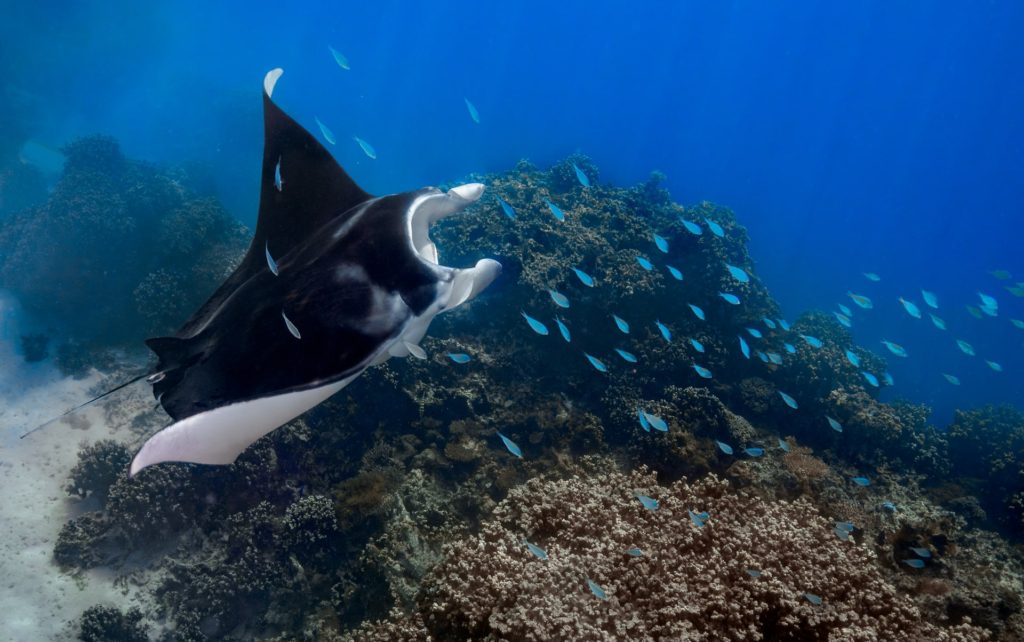
Fakarava
After Bora Bora, we headed to Fakarava in the Tuamotu Islands, where we spent 3 nights. This island was another big change of pace — quiet, remote, and absolutely stunning.
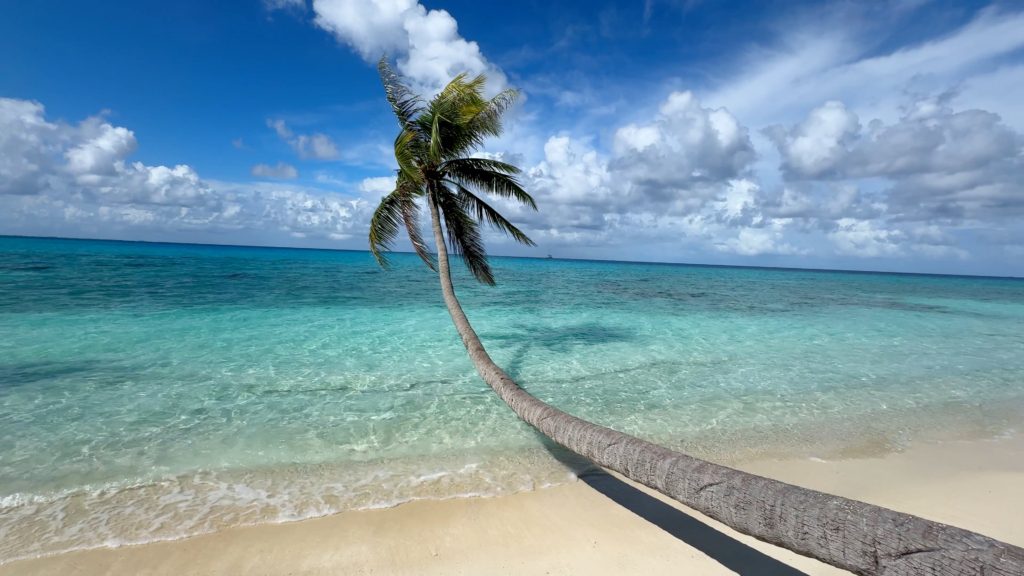
Some highlights included:
-
Diving at South Pass: One of the biggest highlights of the trip. South Pass is often ranked among the best dive sites in the world for shark encounters, and it truly lived up to the hype. The “wall of sharks” is exactly that – hundreds of grey reef sharks swimming in the strong current. An unreal experience and one of the top moments of our whole trip.
-
Day boat tour: We explored several incredible snorkelling spots and finished with lunch on a remote motu. Another perfect, unforgettable day with stunning scenery everywhere you looked.
-
PK9 Beach: On our final day, we visited this long, untouched stretch of white sand – probably the best beach we saw on the entire trip.
Fakarava was amazing. If you’re into diving or just want a more off-the-beaten-path island, it’s definitely worth including in your itinerary.
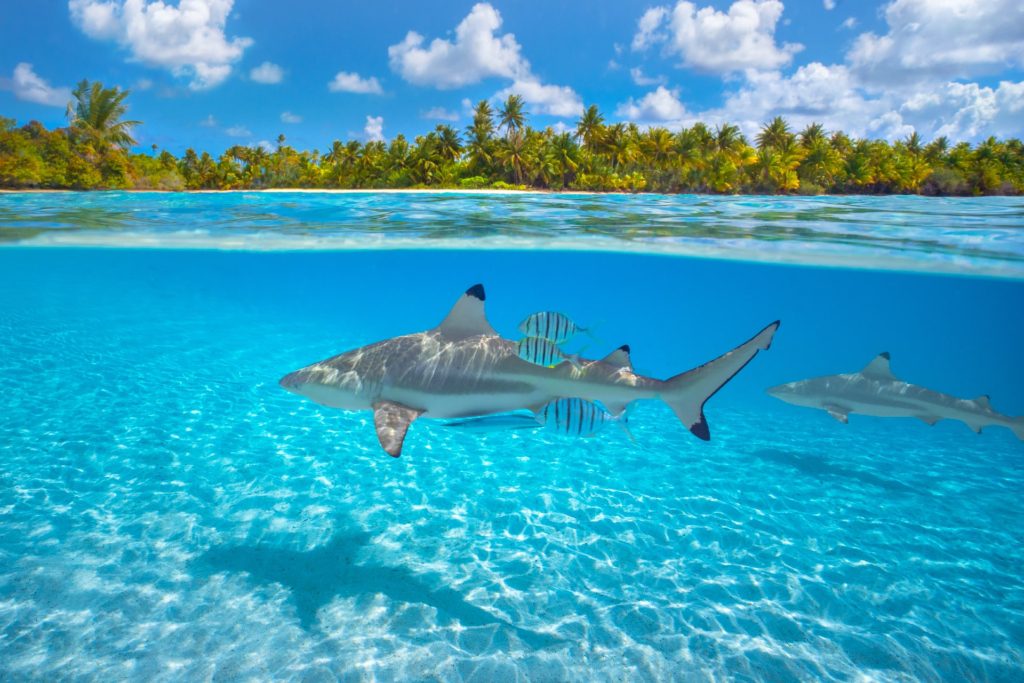
Tahiti
We finished our trip back on Tahiti, where we had one full day to explore before our flight home. After two packed weeks, we were honestly ready for a slower pace, so we spent the day driving around the island, stopping at viewpoints, and just taking it easy. It was a really relaxed way to end the trip.
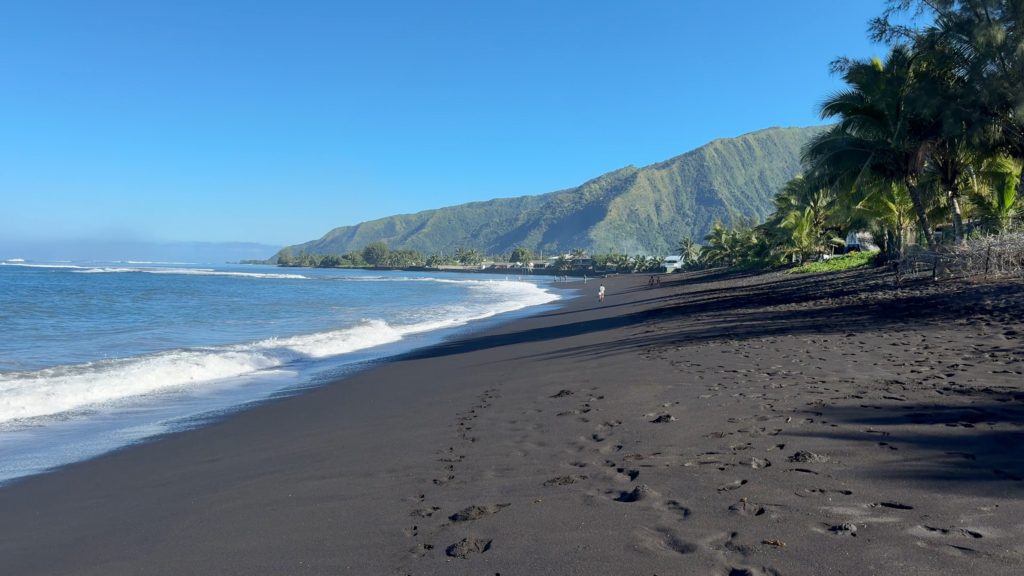
In hindsight, we would’ve loved to spend an extra night in Fakarava, but with the limited flight schedule, it felt too risky. If our flight back to Tahiti had been delayed or cancelled, we might’ve missed our international flight home. Having that buffer day in Tahiti gave us a bit of peace of mind and a stress-free finish to the trip.
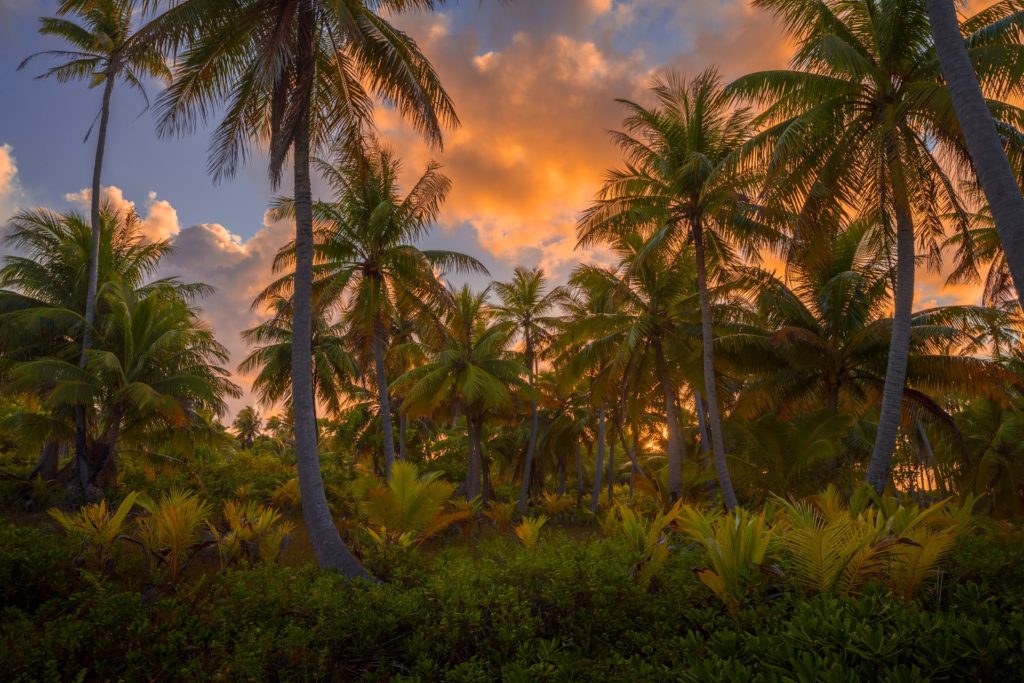
Thoughts & Reflections on our Itinerary
Looking back, I think we nailed the itinerary. We never felt like we stayed too long in one place, but we also managed to do everything we wanted without feeling rushed.
This really confirms something I came across a lot during the planning process — that it’s a good idea to aim for at least three nights on each island. Any less, and you spend too much time packing, checking out, getting to the airport, and waiting around. It quickly eats into your time, and you don’t get to truly enjoy each island.
Accommodation
Just a quick note on the types of accommodation you can expect in French Polynesia. It really depends on how you like to travel, but generally there are two main options: either a big hotel or resort, or something more local, often booked directly with the owner.
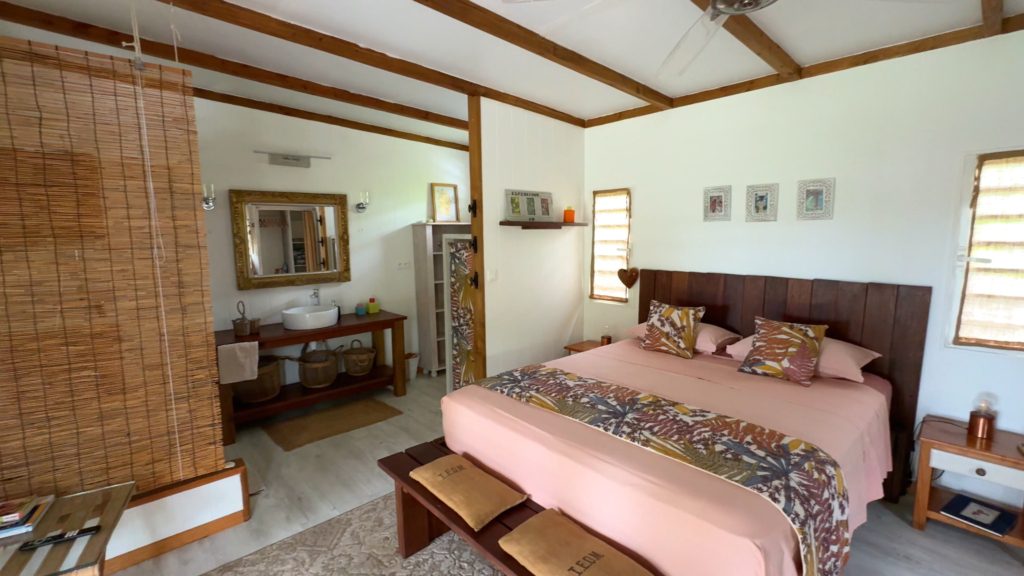
Pensions are very common across the islands – basically guesthouses or B&Bs. Sometimes this is more like renting a bungalow or a room on the host’s property, which is what we mostly did.
Other times, you might stay in a self-contained unit but still be around the host’s family, especially at meal times – like a shared dinner experience where everyone eats together.
This style of accommodation is especially common on smaller or more remote islands, like Huahine or Fakarava, where there aren’t many hotels. In fact, on Fakarava, there are only a handful of what you might call hotel-style options. Staying in these local places gives the trip a much more intimate and authentic feel.
Our hosts were always welcoming, full of suggestions for places to visit, or practical things like hiring a moped — all of which usually comes through in online reviews.
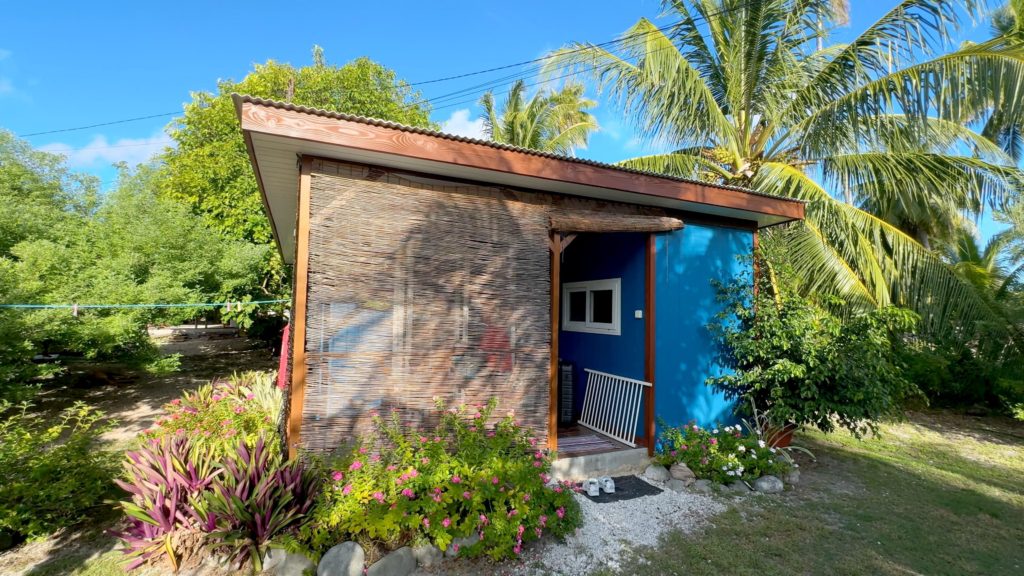
If you’re looking for the overwater bungalow, honeymoon vibe, those are mostly found on the bigger islands like Bora Bora or Moorea. So it’s worth thinking about what kind of experience you want before booking.
Budget & Costs (2025)
Here’s a breakdown of what we spent and what you can expect, just to give you an idea.
Inter-Island Flights – £620 ($840 / 86,000 CPF)
We purchased an Air Tahiti inter-island flight pass, which included 5 trips between islands.
Accommodation – £1,273 ($1,725 / 176,000 XPF) for 16 nights
We generally opted for self-catered places and more budget-friendly options:
-
Moorea: £290 ($393 / 40,000 CPF) for 5 nights
-
Huahine: £247 ($334 / 34,000 CPF) for 3 nights
-
Bora Bora: £225 ($305 / 31,000 CPF) for 3 nights
-
Fakarava: £333 ($451 / 46,000 CPF) for 3 nights
-
Tahiti: £178 ($241 / 25,000 CPF) for 2 nights
Car Rental – £703 ($950 / 97,000 CPF)
Car hire costs by island:
-
Moorea: £202 ($273 / 28,000 CPF)
-
Huahine: £146 ($197 / 20,000 CPF)
-
Bora Bora: £190 ($257 / 26,000 CPF)
-
Tahiti: £165 ($223 / 23,000 CPF)
Fuel: – £60 ($82 / 8,000 CPF)
Tip: Using your own annual car hire excess insurance can save a lot compared to the hire company’s insurance.
Activities – £1,100 ($1,491 / 152,000 CPF) per person
Activities included boat tours, scuba diving, day passes, and boat hire. Costs can add up quickly:
-
Full-day boat tours: £90 ($122 / 12,500 CPF) per person
-
Each dive: £70 ($95 / 10,000 CPF)
-
Resort day pass in Moorea: £105 ($142 / 14,500 CPF)
-
Resort day pass in Bora Bora: £126 ($170 / 17,500 CPF)
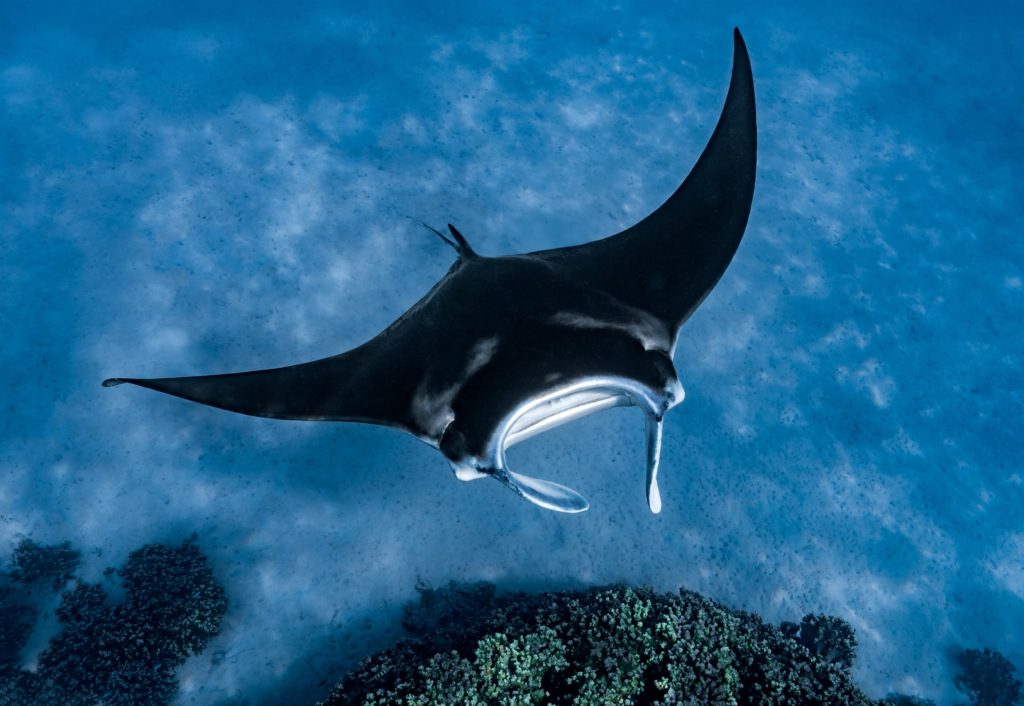
Food
Eating on these remote islands is premium-priced. Meals out can range from:
-
Food truck / small meal: £9 ($12 / 1,250 CPF)
-
Restaurant meal: £20 ($27 / 2,750 CPF)
We mostly cooked in our accommodation kitchens, which saved a lot of money. That said, groceries are also expensive, so expect a higher cost overall.
For meals out, we found the quality of food was good, particularly fish, which was excellent.
SIM Card
You can easily get a SIM card at the airport on arrival in Tahiti. Coverage across islands is generally reliable, and it’s convenient to have one for navigation and communication.
Cash vs Card
-
On less touristy, rural islands (like Huahine and Fakarava), cash is essential.
-
On Bora Bora, card payments are widely accepted due to the tourist focus.
-
For most activities, payment is made at booking, so it’s usually not a problem.
Tips:
-
Tahiti airport ATM near the entrance is convenient for initial cash needs.
-
Moorea and Bora Bora have plenty of ATMs.
-
On remote islands like Fakarava, ensure you have enough cash as ATMs are limited or unavailable.
Useful Things to Pack
So in this section, I just wanted to share some really useful things we packed in addition to the usual stuff you’d pack for a trip like this.
Snorkel Gear
One of the most useful things we packed was our own snorkel, mask, and fins. We used them almost every other day, and having our own gear made everything much easier. On the boat tours, the equipment is often worn out or poorly fitting, which wastes time adjusting straps and buckles. With our own gear, we could just jump in and start exploring.
Fins are especially important if you plan to see fast-moving marine life, like manta rays in Bora Bora. Without them, it’s hard to keep up. They do take up space in your luggage, but if you want to get the most out of your snorkeling and diving experiences, they’re definitely worth bringing.
Having gear that fits and that you know works properly also gives you the freedom to snorkel anytime, including just off the shore, which is perfect for exploring at your own pace.
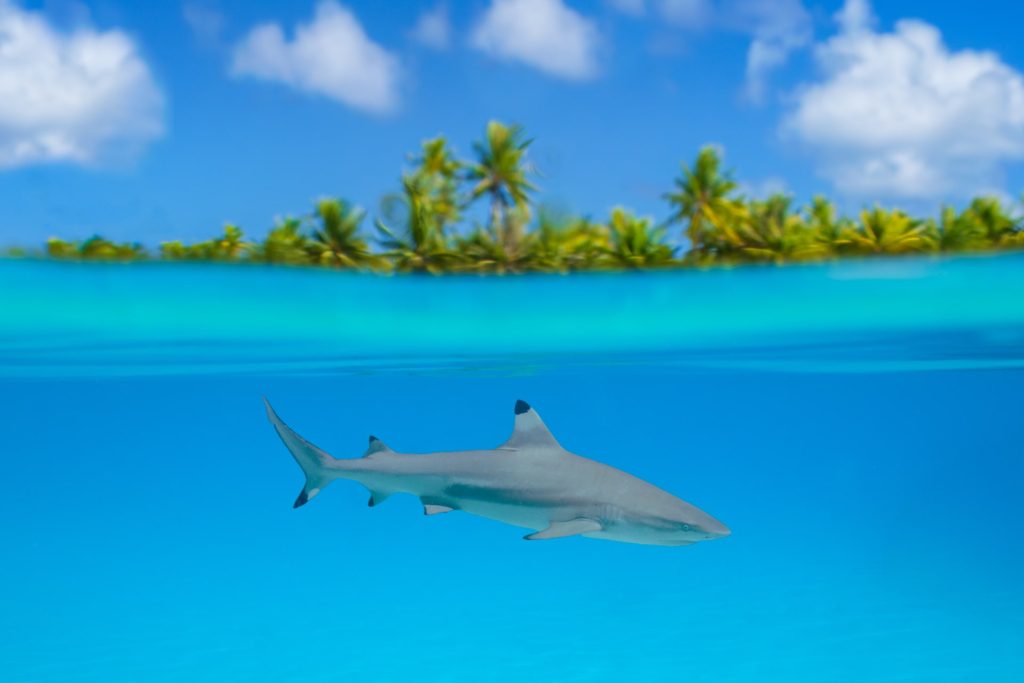
Dry Bag
A dry bag is incredibly useful for boat days. While most of your gear will stay dry on the boat, water can splash in, and there’s always a chance of sudden rain. A dry bag keeps your belongings safe and dry, so you don’t have to worry about wet clothes, electronics, or other essentials.
Pen for Immigration Forms
This is a really boring one, but bringing a pen on your flight to Tahiti is a great tip. You’ll need it to fill out immigration forms handed out as you land. Having your own pen saves a lot of time and they never have enough pens in the airport.
Car Phone Holder
A car phone holder is another small but helpful item. Many rental cars in Tahiti, especially smaller and budget options, don’t come with an integrated navigation screen. A suction cup phone holder makes it easy to follow maps safely while driving, keeping your hands free and your route in view.
Motion Sickness Medication
If you’re prone to seasickness, motion sickness medication is essential. Boat rides can get bumpy, especially on choppier days, so having some on hand can make your trips far more comfortable.
Rash Guard
A rash guard is great for preventing sunburn during long snorkeling sessions. I wore one most days, and it was perfect for protecting my skin while allowing me to stay in the water longer without worry.
Safety
Overall, we felt very safe on all the islands. The locals are friendly and welcoming, and there were no safety concerns during our trip.
When swimming or snorkeling, it’s important to be aware of strong currents in some areas. Always pay attention to your surroundings, and listen to guides during boat trips—they’ll point out safe spots and areas to avoid, especially where boat traffic is heavy.

Regarding marine life, blacktip reef sharks are common while snorkeling, and lemon or grey reef sharks may appear while diving. These species are not aggressive, and keeping a calm, respectful distance ensures your safety. Dive masters provide briefings on proper behaviour and precautions, which are very helpful.
Stingrays can also be encountered. In popular tourist areas, their stingers are often removed, but in less frequented spots, it’s best to keep a wide berth and observe from a safe distance.
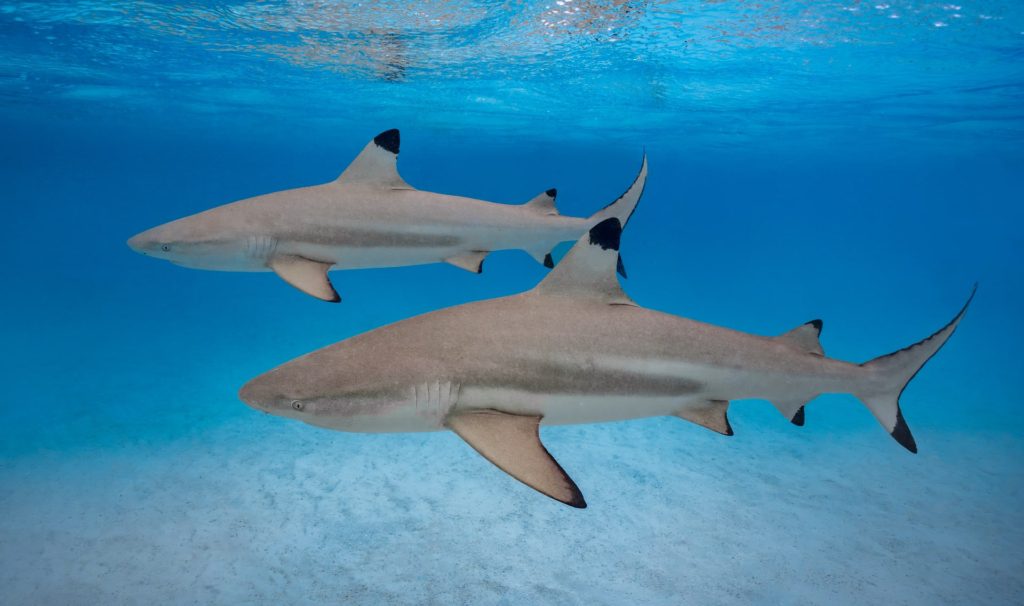
Final Thoughts
That wraps up our guide to traveling in French Polynesia. We hope this gives you a good sense of what to expect and how to make the most of your trip.
If you have any questions about something we didn’t cover, or if you have tips and suggestions from your own experience, feel free to leave a comment below or get in touch on social media.

